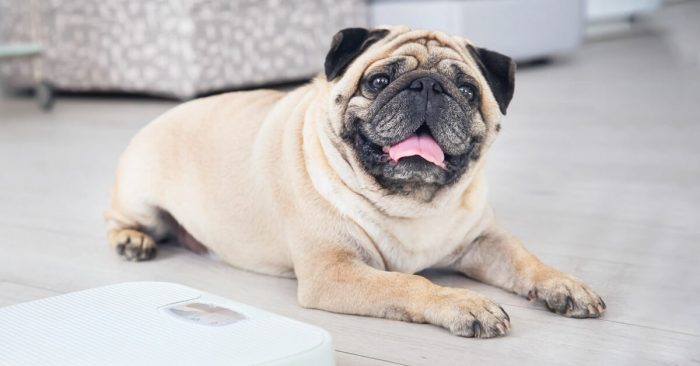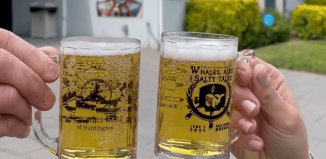Ask the Vet: The ramifications of obesity in pets
By Matthew Kearns, DVM
 I can’t tell you how many pet owners arrive at my clinic saying, “both myself and Fluffy suffer from the COVID 15”, with the “COVID 15” referring to weight gain during the pandemic. Remember, it is important to realize that weight gain in pets is as dangerous as weight gain in humans. Here are a few of the diseases associated with obesity in pets:
I can’t tell you how many pet owners arrive at my clinic saying, “both myself and Fluffy suffer from the COVID 15”, with the “COVID 15” referring to weight gain during the pandemic. Remember, it is important to realize that weight gain in pets is as dangerous as weight gain in humans. Here are a few of the diseases associated with obesity in pets:
Growth abnormalities and arthritis: There is a documented link between overfeeding and growth abnormalities. One study was able to prove that by feeding a group of growing dogs less calories than the control group, the risk of hip dysplasia was reduced by 25%. We are not talking about starving dogs, just not overfeeding. Additionally, the added weight is a burden on already arthritic joints, especially in older pets.
Respiratory Disorders: Severe obesity will lead to respiratory problems in any pedigree or mixed breed. However, brachycephalic breeds (breeds with flat faces) such as Pugs, Boston Terriers, Shih Tzus, Lhasa Apso, English Bulldogs, Pekingese, etc) and cat breeds such as Persians are at a higher risk.
Pancreatitis and diabetes: Pancreatitis is a serious disease, sometimes life threatening, in dogs and cats just as it is in people and risk increases with obesity. Pancreatitis can damage the insulin- producing cells in the pancreas but experts conclude that insulin resistance is more common in obese pets similar to insulin resistance in obese humans.
Anesthetic risk: Recent studies have shown a 20 to 40% increase in mortality associated with general anesthesia in obese patients. The added fat increases blood pressure and makes it more difficult for the anesthetized patient to breathe on their own under general anesthesia.
Heart failure: Although obesity does not have a direct effect on the development of heart disease or failure, obesity in a pet with a pre-existing heart condition will hasten the progression to heart failure.
How do we reverse the trend of obesity in our pets? Same as ourselves: eat less, exercise more. However, before radically reducing your pet’s food intake or taking them on a 10-mile run, it would be better to make an appointment with your veterinarian to examine your pet. This way both you and your veterinarian can identify obesity and make sure there is no underlying disease that should be addressed first. Older pets that suffer from obesity could also have an underactive thyroid gland, arthritis, etc.
If your veterinarian feels that your pet is healthy, then you can identify obesity and set realistic goals. Eliminating all the extras (table scraps, extra cookies, treats, rawhides, pig’s ears, etc) are a good start. These are all empty calories. If that is not working then you may need to cut back on the amount of food, or consider a weight-reducing diet. These diets are available both commercially and through your veterinarian.
Controlled exercise (short walks at first) not only burns calories but enhances the bond between our pets and ourselves. Cats, especially indoor only cats, can’t go on walks but there are toys that you can play with them. Make sure these toys are not made of material that could be chewed off or fray and potentially form an obstruction.
So, remember to have your pets eat right and exercise. That is the best way to keep them happy and healthy.
Dr. Kearns practices veterinary medicine from his Port Jefferson office and is pictured with his son Matthew and his dog Jasmine.







